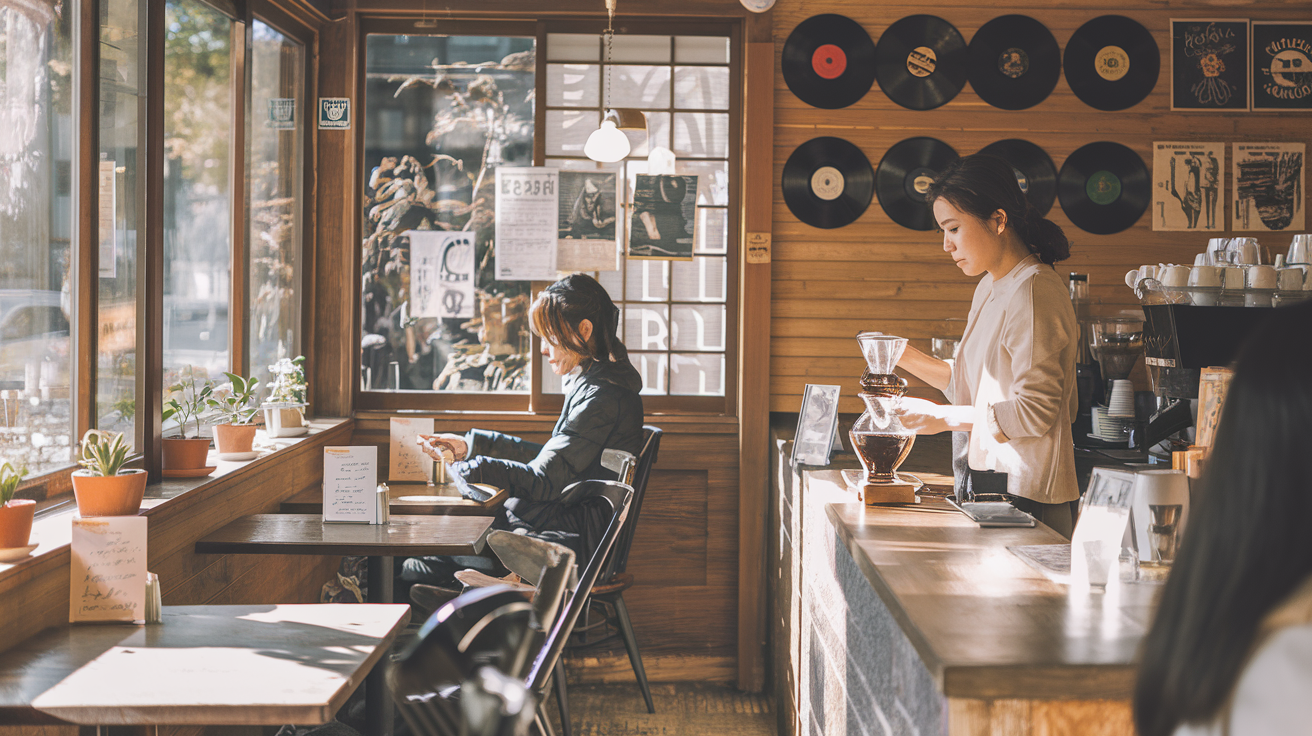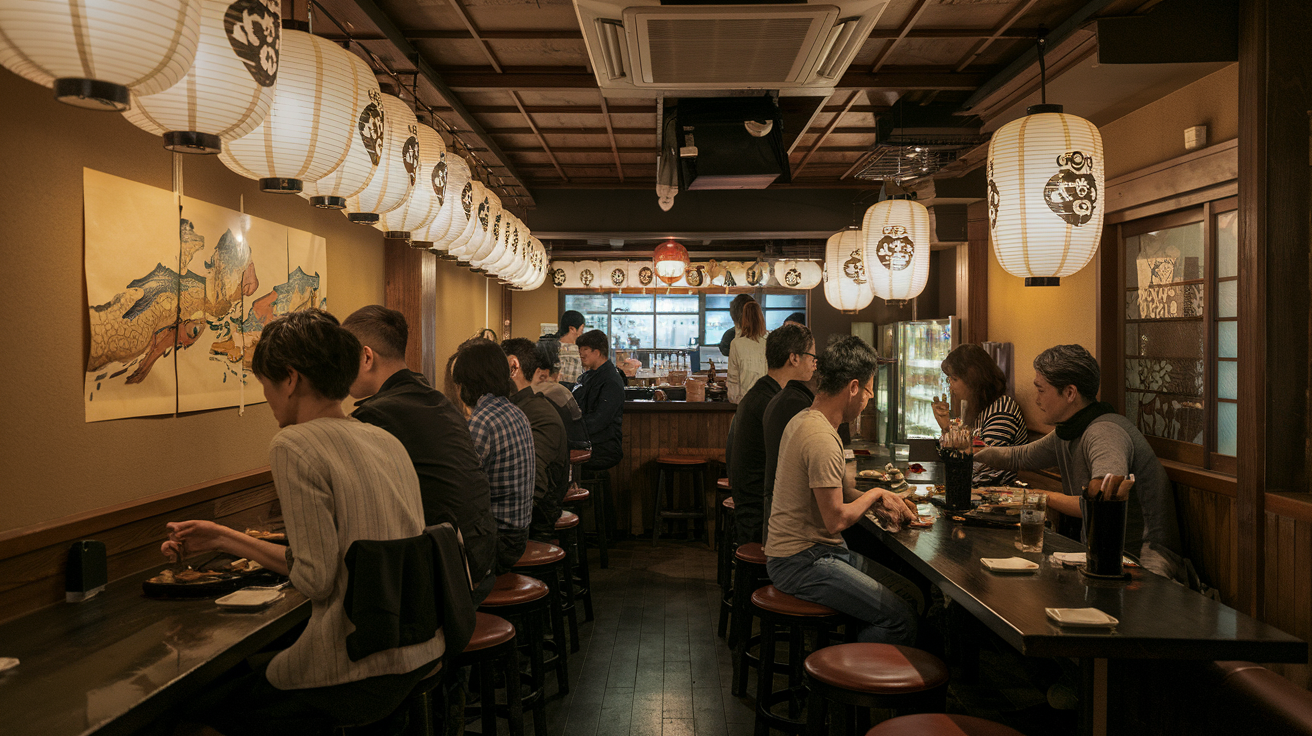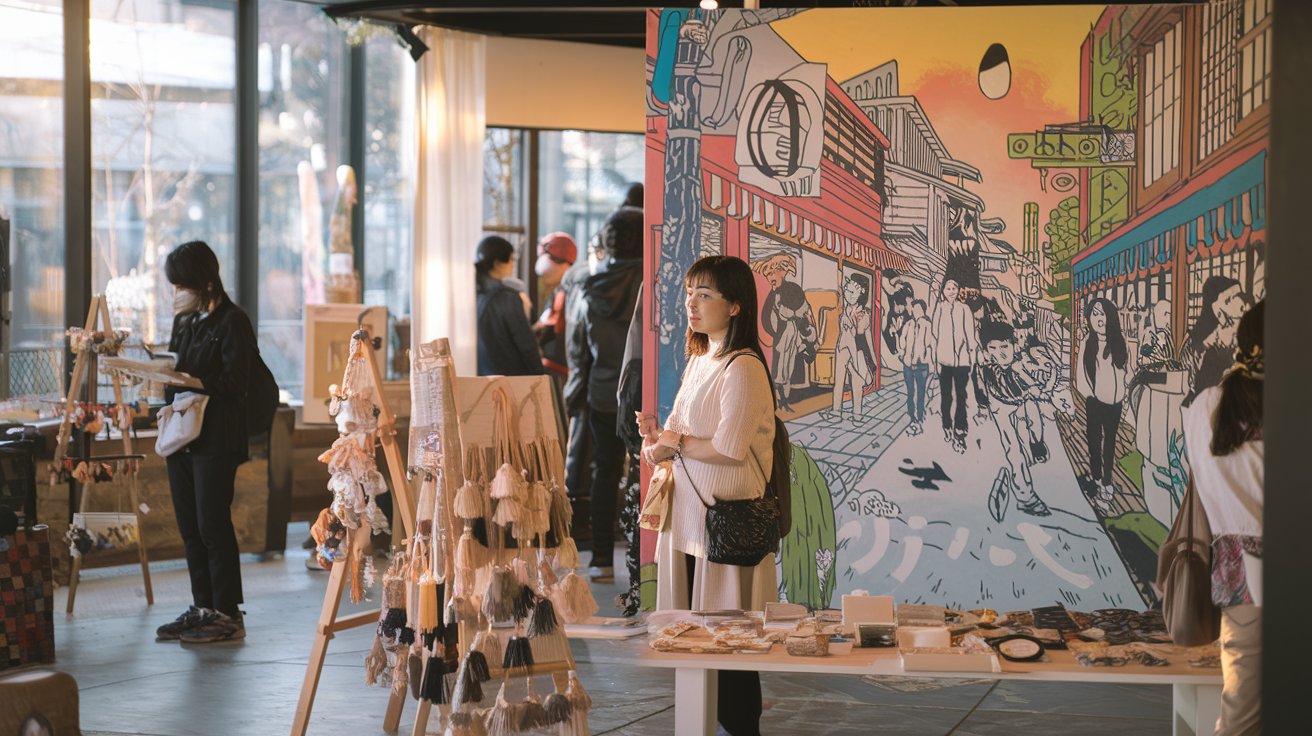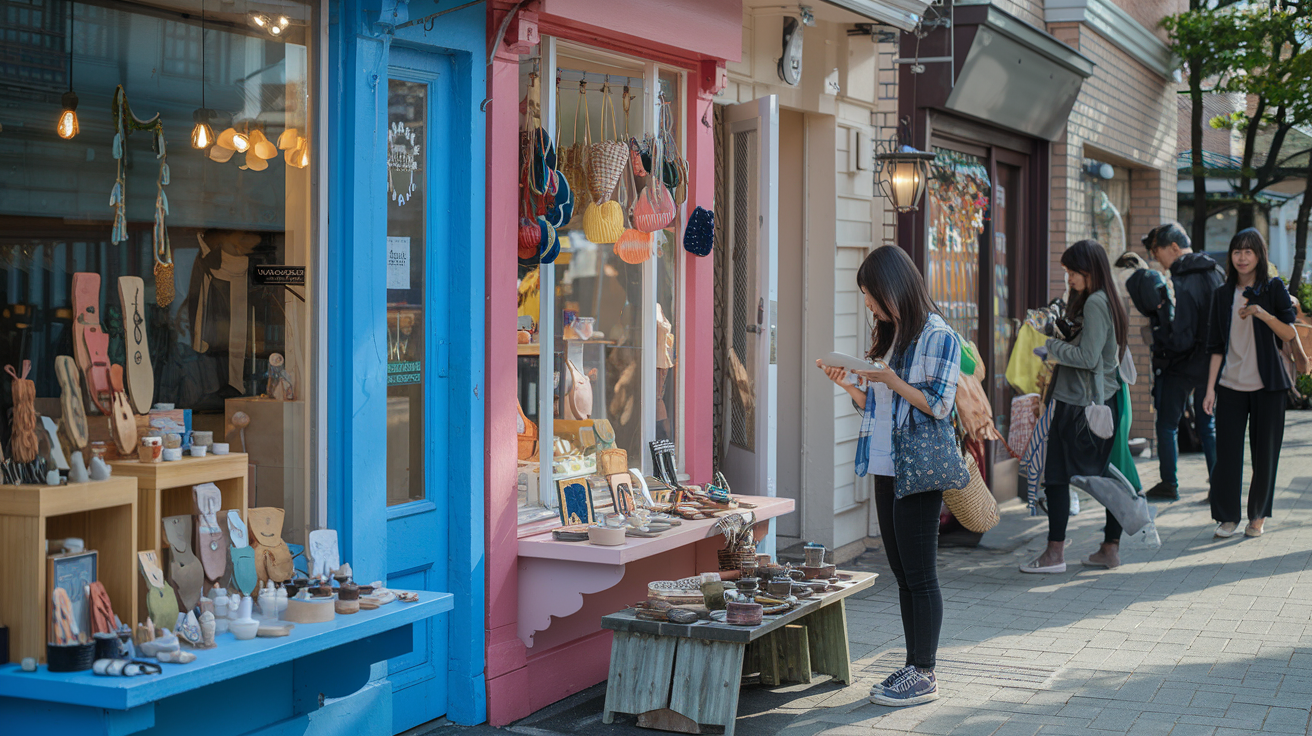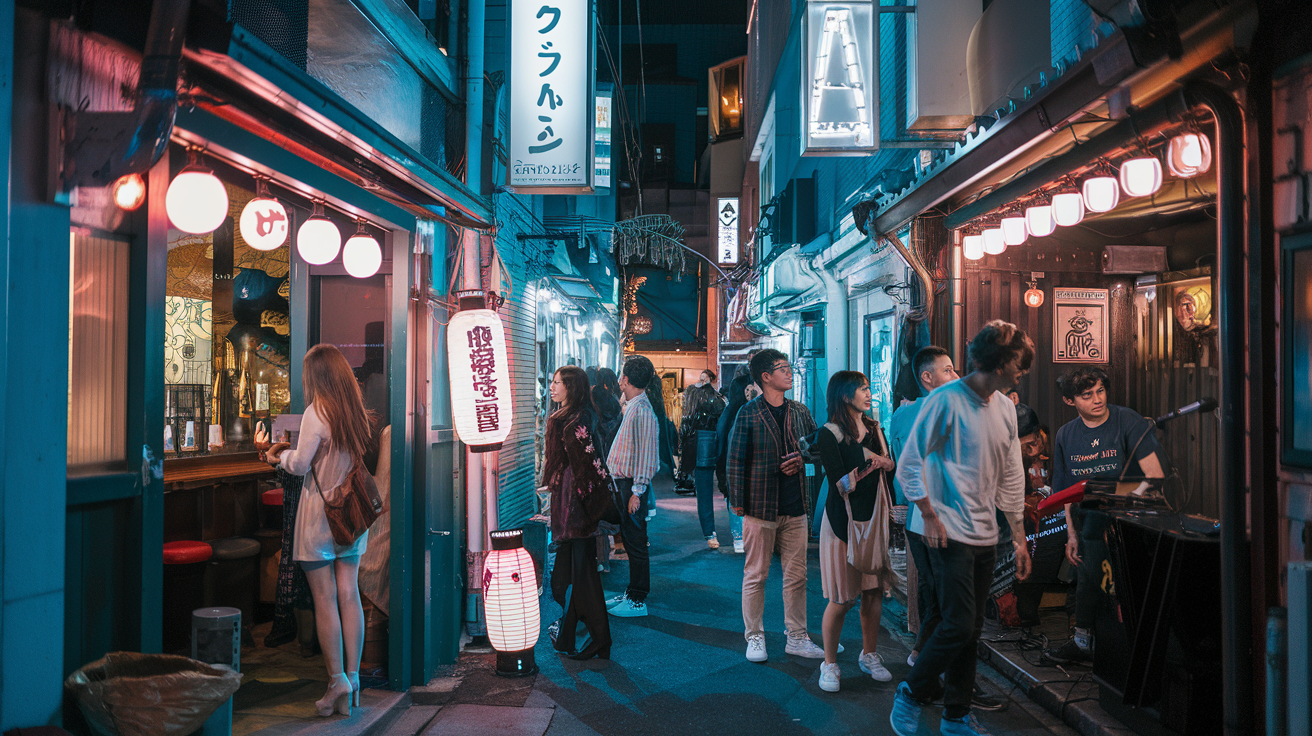20 Things to Do in Shimokitazawa, Tokyo: More Than Just Thrifting!

Ever walked into a neighborhood that feels both utterly foreign and instantly familiar? That’s Shimokitazawa for you—Tokyo’s bohemian heart that somehow escaped the city’s chrome-and-glass makeover.
While most Tokyo guides send you to the same crowded spots, things to do in Shimokitazawa offer a refreshing alternative to the typical tourist circuit. This isn’t just another shopping district; it’s where Tokyo’s creative pulse beats strongest.
Yes, the vintage shops are legendary (we’ll get to those), but reducing “Shimokita” to just thrifting is like saying Paris is just the Eiffel Tower.
Between the narrow alleyways and retro cafés lies a world where Tokyo’s past and future collide in the most delicious way possible. But what exactly makes this place Tokyo’s worst-kept secret?
Navigating Shimokitazawa’s Famous Vintage Shopping Scene
A. Best streets for authentic vintage clothing finds
Shimokitazawa’s magic happens on its winding backstreets. Start with Kitazawa Minami Street, the main shopping artery where vintage shops sit shoulder-to-shoulder. The narrow alleys branching off this street hide some real treasures – especially the northern section near the station.
Don’t miss the cluster around Green Street, where smaller boutiques offer curated collections you won’t find anywhere else. The southern area near Shimokitazawa South Exit has become a hotspot for higher-end vintage with more specialized offerings.
The beauty of Shimokita shopping? You can literally wander aimlessly and bump into amazing stores. Unlike Harajuku with its tourist crowds, these streets feel like a local’s secret.
B. Top 5 thrift stores with unique Japanese fashion
- New York Joe Exchange – The granddaddy of Shimokita thrifting. Their buy-sell-trade model means fresh inventory daily. Score anything from 80s Gundam tees to pristine kimono jackets.
- Flamingo – A multi-floor wonderland with color-coded racks and surprisingly affordable prices. Their Japanese workwear section is unmatched.
- Chicago – Massive selection with everything from Y2K Gyaru fashion to traditional Japanese pieces reimagined.
- Ragla Magla – Tiny but mighty, specializing in authentic Japanese streetwear from the 90s-00s.
- Haight & Ashbury – Premium vintage with a killer selection of Japanese designers like Yohji Yamamoto and Comme des Garçons at reasonable prices.
C. Specialty vintage shops for collectors and enthusiasts
Serious collectors need to hit Grown Punk for rare Japanese band merch and counterculture pieces from Japan’s punk scene. Their basement archive is by-appointment only but worth arranging.
For traditional textiles, Kimono & Modern stocks everything from antique obi belts to repurposed kimono jackets at collector-worthy quality.
BerBerJin deserves special mention for housing Japan’s rarest vintage denim. The owner can tell you the exact factory and year of production for every pair.
Vinyl junkies should duck into Flash Disc Ranch – half record store, half vintage clothing with a focus on music-related fashion.
D. Budget-friendly thrifting tips from locals
Shop mid-week when stores restock but crowds are thinner. Many shops mark down items that haven’t sold after two weeks – ask staff when their rotation schedule happens.
The 100 yen bins (around $1) at stores like Wego and Mode Off often contain overlooked gems. I once scored a pristine Bathing Ape tee for literally a dollar.
Don’t ignore the men’s section regardless of your gender – Japanese sizing runs small, and some of the best vintage is gender-neutral anyway.
Bring cash! Many smaller shops don’t take cards, and you’ll have better luck negotiating slight discounts with cash in hand.
Hit up the area’s numerous 300-500 yen shops where everything costs the same. Quality varies wildly, but patient shoppers find incredible pieces hiding among the ordinary.
Exploring the Local Café Culture
Hidden coffee shops with artisanal brews
Shimokitazawa isn’t just about vintage shopping—it’s a coffee lover’s paradise. Tucked away in narrow alleys and repurposed buildings are some of Tokyo’s most passionate coffee artisans.
Bear Pond Espresso might look unassuming, but coffee aficionados make pilgrimages here for their legendary “Angel Stain” espresso. Just don’t show up after noon—the owner stops making espresso shots to maintain quality control.
For something more experimental, Frankie Melbourne Espresso serves Australian-style coffee with Japanese precision. Their cold brews infused with seasonal ingredients like yuzu or sakura will change how you think about coffee.
Can’t miss Woodberry Coffee either. Housed in what feels like someone’s living room, the baristas treat coffee-making as performance art, meticulously preparing pour-overs while chatting about their latest bean discoveries.
Instagram-worthy dessert cafés
The dessert scene in Shimokita is next-level cute and completely camera-ready.
Shiro-Hige’s Cream Puff Factory creates Totoro-shaped cream puffs that are almost too adorable to eat. Almost. The crispy choux pastry filled with velvety custard cream makes the perfect snap for your feed.
At Flipper’s, their souffle pancakes actually jiggle when served. These cloud-like creations come topped with seasonal fruits or decadent matcha cream—either way, you’ll need to grab a video before digging in.
Book cafés for a relaxing afternoon
When shopping fatigue hits, these literary havens offer the perfect respite.
B&B combines books and beer (genius!) in a cozy setting where you can browse English and Japanese titles while sipping craft brews. Their collection focuses on art, design, and counterculture—perfect for Shimokitazawa’s vibe.
For a quieter atmosphere, Morinoie Book Café offers floor cushions where you can curl up with one of their carefully curated books. Their homemade ginger lemonade and veggie curry plates make it dangerously easy to spend an entire afternoon here.
Immersing in Shimokitazawa’s Music Scene
Live music venues showcasing underground talent
Shimokitazawa’s heartbeat is its thriving underground music scene. Three venues stand out among the rest. Shelter, tucked away in a basement, hosts everything from post-rock to experimental electronic acts, with its low ceilings creating an intimate experience you won’t forget. Then there’s Flower Bar, where indie bands cut their teeth before breaking into the mainstream. Don’t miss Three, a tiny space where you’ll be so close to the performers you can practically feel their sweat.
Want a truly authentic experience? Show up early, chat with the staff, and they might tip you off about which unknown band is about to blow up. Most venues charge a 2000-3000 yen cover that includes one drink.
Record stores with rare Japanese vinyl
Shimokitazawa is vinyl heaven. Flash Disc Ranch is the crown jewel, with crates of obscure Japanese city pop and soundtracks you didn’t know you needed until now. The owner’s knowledge is encyclopedic – just mention a genre and watch him pull out exactly what you should be listening to.
Jet Set Records specializes in underground electronic music, while City Country City focuses on jazz reissues and funk rarities. Most stores have listening stations, so you can sample before dropping serious yen on that limited pressing.
Monthly music events and festivals
Time your visit right and you’ll hit music gold. The Shimokitazawa Sound Cruising festival transforms the entire neighborhood into a massive venue each May, with over 100 acts performing across dozens of spaces. For something more regular, Sound & Vision happens the last Sunday monthly, featuring vinyl DJs and live acts at various cafes.
During summer, the impromptu Night Festival sees bands playing on makeshift stages in alleys and parking lots – totally unofficial but completely magical.
Jazz bars with authentic Tokyo atmosphere
For a different pace, Shimokitazawa’s jazz scene delivers smoky sophistication. Apollo has been serving whisky and bebop since 1975, with its wood-paneled walls soaking up decades of saxophone solos. The tiny bar fits maybe 15 people, making every session feel like a private concert.
Pit Inn’s Shimokita branch showcases younger talent, while Mother emphasizes fusion and more experimental sounds. Most charge a music fee (1000-2000 yen) plus drinks, but the experience of watching world-class musicians in spaces smaller than your living room is priceless.
Where to catch impromptu street performances
The beauty of Shimokitazawa’s music doesn’t just live indoors. The small square outside the south exit of the station transforms into an acoustic performance space on weekend evenings. Young singer-songwriters test new material while seasoned buskers draw impressive crowds.
The covered shopping arcade near Suzunari Theater regularly hosts impromptu jam sessions, especially on Sunday afternoons. Just follow your ears – that haunting melody might lead you to a hidden talent playing between vintage clothing shops.
Dining Like a Local
Izakayas with authentic Tokyo flavors
Shimokitazawa’s izakaya scene hits different. These traditional Japanese pubs are where locals actually hang out after work, not the touristy spots you’ll find in Shinjuku.
Ushitora stands out with its rotating selection of craft beers and izakaya classics. Their chicken karaage has this perfect crunch that’ll make you wonder why all fried chicken can’t taste this good.
At Shirube, the master behind the counter has been perfecting his yakitori for 30+ years. The chicken skewers here aren’t just food—they’re tiny masterpieces of smoke and salt.
Don’t miss Bistro Toge for a modern twist on izakaya fare. Their potato salad with house-made bacon bits will ruin regular potato salad for you forever.
Vegetarian and vegan-friendly spots
Think Japanese food is all fish and meat? Shimokitazawa flips that script.
Saishoku Vegetable is the neighborhood’s plant-based pioneer, serving colorful veggie bowls that Instagram dreams are made of. Their tempeh burger with wasabi mayo converts even dedicated carnivores.
Trueberry cafe nails the smoothie bowl game with locally-sourced ingredients and homemade granola that’s ridiculously addictive.
For dinner, Bon serves vegan ramen that’s so rich and creamy you’ll swear there’s pork fat in the broth (there isn’t—it’s sorcery with soy milk and vegetable oils).
Street food worth queuing for
The lines don’t lie in Shimokitazawa.
Shimokita Croquette’s potato croquettes sell out daily—crispy outside, cloud-like inside, with fillings ranging from classic curry to seasonal specials like spring bamboo shoots.
Crepe fans, get in line at Marion Crepes. Their savory-sweet combinations like teriyaki chicken with cheese might sound weird but taste mind-blowing.
The tiny taiyaki stand near the station makes fish-shaped cakes filled with traditional red bean paste that’s actually worth the 15-minute wait.
For late-night munchies, follow the smell of butter to Corn Dogs Tokyo, where the cheese-filled options will fix whatever mistakes you made earlier that evening.
Experiencing Shimokitazawa’s Art and Culture
Independent galleries featuring local artists
Shimokitazawa isn’t just about vintage shopping—it’s an artist’s playground. Hidden between the thrift stores are small, independent galleries showcasing work you won’t find in Tokyo’s mainstream art scene.
Check out “Moire” gallery, where emerging artists display everything from contemporary paintings to experimental installations. The tiny “Lader” gallery might look unassuming from outside, but inside, it hosts rotating exhibitions from Tokyo’s most promising creatives.
What makes these spaces special? The gallery owners are often artists themselves who’ll happily chat about the work while you sip on complimentary tea.
Street art and murals walking tour
The walls of Shimokitazawa tell stories through vibrant colors and bold designs. Duck into any alleyway and you’ll discover murals that change regularly, keeping the neighborhood fresh.
Start at the iconic elephant mural near the station’s south exit, then wind your way through the backstreets where local artists have transformed ordinary walls into stunning canvases. The “Kitazawa Mural Project” has added over 15 large-scale works in recent years.
Don’t rush this experience—the best pieces are often tucked away where tourists don’t venture. Grab a street art map from the tourist information booth or join one of the weekend walking tours led by local artists.
Pottery and craft workshops for visitors
Want to get your hands dirty? Shimokitazawa has workshops where you can create your own Japanese crafts.
“Ceramica” studio offers drop-in pottery sessions where you can try wheel-throwing or hand-building techniques. They’ll even ship your finished pieces home if you’re traveling. For something quicker, “Washi Works” runs Japanese paper-making classes lasting just two hours.
Most workshops are small—maybe 6-8 people max—so you get personal guidance from skilled artisans who speak enough English to get you through the process.
Theater and performance spaces
Shimokitazawa’s performing arts scene rivals its visual arts. The neighborhood houses over 15 small theaters within walking distance of each other.
Honda Theater showcases avant-garde plays while Shimokitazawa Cage hosts everything from experimental dance to indie rock shows. For something truly unique, catch a performance at Attic Theater—a converted warehouse where audience members sit on floor cushions just feet away from performers.
Shows typically run in the evenings, with ticket prices around 2,000-3,000 yen. While many performances are in Japanese, the visual elements often transcend language barriers. Some venues offer English program notes if you ask in advance.
Unique Shopping Beyond Vintage Clothes
Independent designer boutiques
Shimokitazawa isn’t just vintage heaven—it’s where Tokyo’s indie designers showcase their creativity without mainstream constraints. Skip the cookie-cutter department stores and discover shops like Flamingo, where every piece tells a story. The designers here create everything from statement jewelry to avant-garde clothing that you won’t find anywhere else in Tokyo.
Don’t miss Sokkyō, a tiny boutique where three local designers rotate their collections seasonally. Their handcrafted bags use leather sourced from traditional Japanese tanneries—perfect for fashion-forward travelers seeking authentic craftsmanship.
Quirky gift shops for one-of-a-kind souvenirs
Forget those plastic Tokyo Tower keychains! Shimokitazawa’s gift shops offer souvenirs with actual personality. Village Vanguard is sensory overload in the best way—weird gadgets, quirky stationery, and Japan-exclusive items that’ll make your friends back home genuinely jealous.
For something truly special, pop into Torajirō, where artisans create woodblock-printed tenugui (hand towels) with modern designs. They make perfect lightweight souvenirs that actually serve a purpose.
Bookstores with English selections
Bookworms, rejoice! B&B Books houses an impressive collection of art books, indie magazines, and English-language titles focusing on Japanese culture and design. Their carefully curated selection beats any airport bookshop.
Shakespeare and Company (yes, inspired by the famous Paris store) offers secondhand English books at reasonable prices. The owner speaks English and loves recommending hidden Japanese literary gems available in translation.
Record and music equipment shops
Shimokitazawa’s music scene thrives in its legendary record stores. Disk Union’s multi-floor vinyl paradise houses everything from obscure Japanese city pop to international releases. Their staff really knows their stuff—tell them what you like, and they’ll guide you to something similar but uniquely Japanese.
Flash Disc Ranch specializes in rare vinyl and maintains an impressive collection of Japanese pressings that collectors dream about. For musicians, Shimokita Sound Market offers vintage equipment with that warm, analog sound that digital just can’t match.
Nightlife Adventures in Shimokitazawa
Cozy Bars with Craft Cocktails
Shimokitazawa’s nightlife isn’t loud or flashy—it’s intimate and authentic. After sunset, the neighborhood transforms into a playground for cocktail enthusiasts.
Don’t miss Mother, a tiny eight-seat bar where the owner crafts drinks with surgical precision. The cocktail menu changes seasonally, but their yuzu gin fizz is legendary among regulars.
For something with vintage vibes, Flower Bar Gardenia combines floristry with mixology. Each cocktail comes garnished with edible flowers, and the bartenders know their spirits like botanists know their plants.
Bar Ishinohana might be small, but the bartender’s skills are anything but. The fresh fruit cocktails here aren’t just Instagram-worthy—they’re complex flavor bombs that will ruin ordinary drinks for you forever.
Karaoke Spots Favored by Locals
Skip the massive karaoke chains. Shimokita locals hit up 1kara, where you can rent tiny booths for solo singing sessions when your friends aren’t feeling your endless Queen renditions.
Karaoke-kan’s Shimokitazawa branch has worn-in charm and rooms that feel like your cool friend’s basement. The song selection spans decades and includes surprising English tracks.
For something uniquely Shimokita, try Jet, where the owner doubles as your personal hype man and the drink prices won’t make you cry.
Late-Night Eateries Perfect After Bar-Hopping
Nothing soaks up alcohol like Shimokitazawa’s late-night eats. Nagi Ramen stays open until 5am, serving thick tonkotsu ramen that hits the spot after cocktails.
Torisoba Soruto keeps the lights on until 2am, dishing out chicken-based ramen that locals swear cures hangovers before they start.
For something quick, the gyudon at Sukiya comes topped with a runny egg—perfect drunk food at 3am when you’re trying to remember where you parked your bike.
If sweets call your name after drinking, Shimokitazawa Pancake serves fluffy Japanese pancakes until midnight on weekends. The wait might be long, but your slightly tipsy self will thank you.
Day Trip Itineraries
A. Perfect morning to evening schedule for first-timers
First time in Shimokitazawa? I’ve got you covered with this foolproof itinerary:
9:00 AM: Start with breakfast at Bear Pond Espresso. Their coffee is legendary, and their morning pastries will fuel your day of exploration.
10:30 AM: Hit the vintage shops when they open. Flamingo, New York Joe Exchange, and Chicago are must-visits before the afternoon crowds.
12:30 PM: Lunch at Shirube for authentic Japanese home cooking or grab onigiri from one of the street vendors if you’re on the go.
2:00 PM: Explore the quirky side streets. Pop into Tonotoko Records, browse indie bookstores, and check out local crafts at the tiny boutiques scattered throughout the neighborhood.
4:00 PM: Coffee break at Frankie. Their rooftop space offers a perfect vantage point to watch the neighborhood come alive for evening.
6:00 PM: Dinner at Shimokitazawa Cage, an izakaya with amazing small plates and local beer.
8:00 PM: Catch a live show at Shelter or Three for nighttime entertainment. If you’re not into music, hit up a cozy bar like Mother.
10:30 PM: End your night with a nightcap at Barnitas, where the bartenders mix some of the best cocktails in Tokyo.
B. Photography-focused walking route
Camera ready? Shimokitazawa is a photographer’s playground:
Honda Yokocho Alley: Start early to capture the morning light filtering through this narrow shopping street. The vintage signage creates perfect composition opportunities.
Railway Crossing: The iconic crossing near the station offers urban shots with passing trains and locals rushing by.
Street Art Walls: Head to the north side where colorful murals make for vibrant backdrops. The constantly changing street art means there’s always something new to shoot.
Village 2 Building: This retro shopping complex has fantastic architectural details and warm lighting through its windows.
Suzunari Theatre Area: In the afternoon, capture the theatrical crowd and interesting posters around this cultural hub.
Sunset at Kitazawa River: The small river path offers surprising golden hour reflections.
Evening Izakaya Lanterns: As night falls, the glowing lanterns outside traditional eateries create atmospheric low-light photography opportunities.
Pro tip: Bring a 35mm lens for street photography and a fast 50mm for low-light evening shots. The narrow streets make wide-angle lenses less practical here.
C. Rainy day alternative activities
Caught in Tokyo’s rain? Shimokitazawa still delivers:
Indoor Shopping Complexes: Head to Shimokita Ekimae Building or Village 2 where you can browse multiple shops without getting soaked.
Café Hopping: This is your chance to try those cozy cafés you’d otherwise skip. B&B Books combines a bookstore with coffee, perfect for lingering during a downpour.
Shimokitazawa Theatre: Check out what’s playing at Honda Theatre or Suzunari. Even if you don’t understand Japanese, the visual performances are worth experiencing.
Record Browsing Marathon: Flash Disc Ranch, City Country City, and Jet Set all offer hours of vinyl exploration under one roof.
Game Centers: The neighborhood has several retro arcades where you can challenge locals at classic games.
Cooking Class: Several places offer drop-in Japanese cooking lessons—make your rainy day productive by learning to roll sushi or make dashi.
Sake Tasting: Duck into Sakeya for an impromptu tasting session of Japan’s iconic rice wine.
Karaoke Boxes: Embrace a true Tokyo experience by renting a private karaoke room at Karaoke-kan and singing away the rainy blues.
D. Connecting Shimokitazawa with other Tokyo neighborhoods
Shimokitazawa makes an excellent base for Tokyo exploration:
Shibuya Connection: Just a 5-minute train ride away, hit Shibuya for its famous crossing and department stores. Pro move: Visit Shibuya in the morning, then retreat to Shimokita when tourist crowds peak.
Shinjuku Adventure: Take the Keio Line direct to Shinjuku (10 minutes) for skyscrapers, the Metropolitan Government Building’s free observatory, and Kabukicho nightlife.
Combine with Koenji: Fellow hipster haven Koenji is just two stops away on the Chuo Line. Both neighborhoods in one day gives you the ultimate alternative Tokyo experience.
Setagaya Residential Loop: Connect Shimokitazawa with nearby Setagaya residential areas like Gotokuji (home to the original maneki-neko cat temple) and Kyodo for a glimpse of local Tokyo life.
Day Trip to Kichijoji: Ride 15 minutes to reach Kichijoji, where Inokashira Park offers swan boats and the Ghibli Museum (requires advance booking).
Evening in Nakano: After a day in Shimokita, take a quick train to Nakano for dinner and explore Nakano Broadway, a geek paradise full of anime collectibles and retro toys.

Shimokitazawa offers far more than its renowned vintage shopping scene. From its vibrant café culture and dynamic music venues to diverse dining experiences and artistic spaces, this Tokyo neighborhood rewards those willing to explore beyond the thrift shops. The district’s unique retail options, energetic nightlife, and cultural attractions create a perfect blend of traditional and contemporary Japan.
Whether you’re planning a day trip or a longer stay, Shimokitazawa invites you to wander its narrow streets and discover your own favorite spots. So next time you’re in Tokyo, venture beyond the typical tourist destinations and lose yourself in this creative hub where every alley hides a new experience waiting to be discovered.



